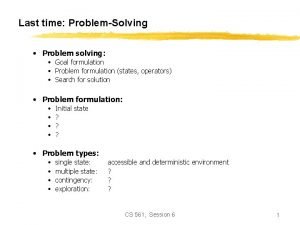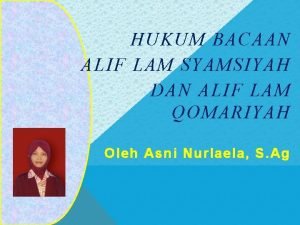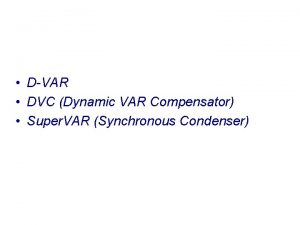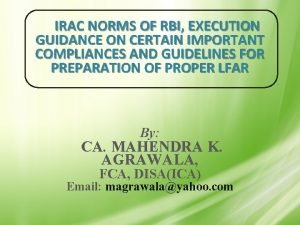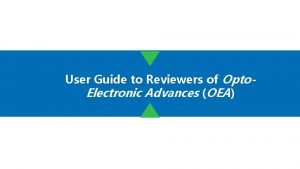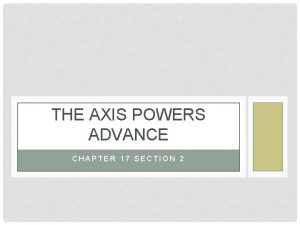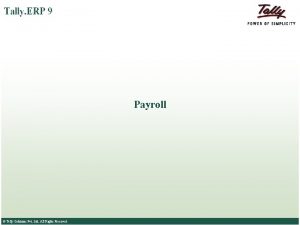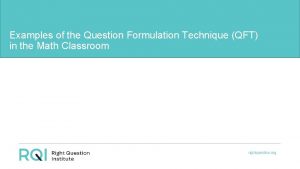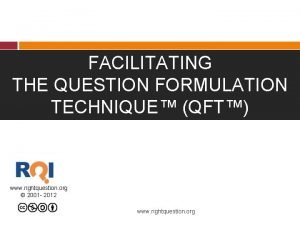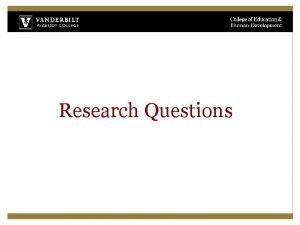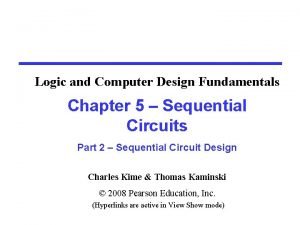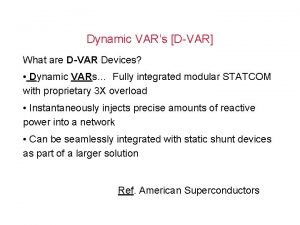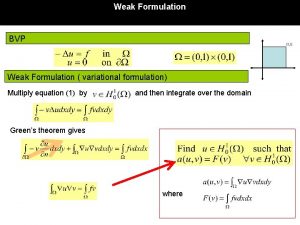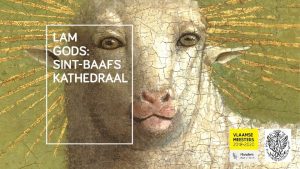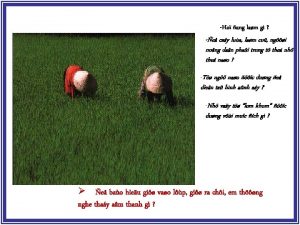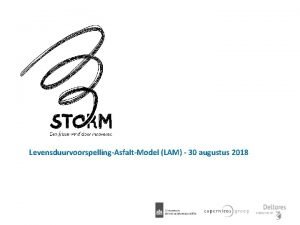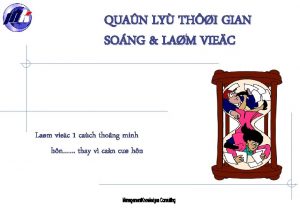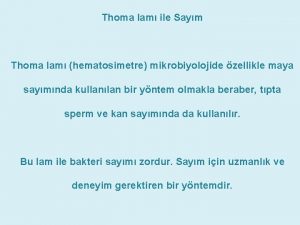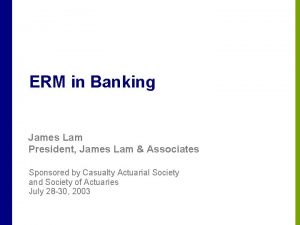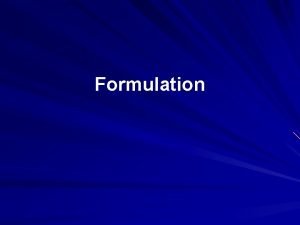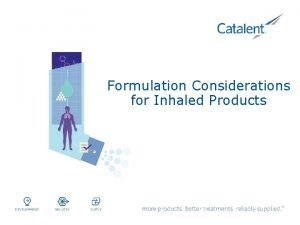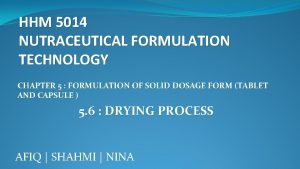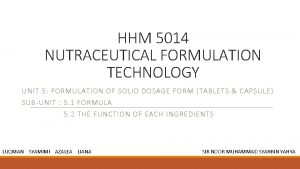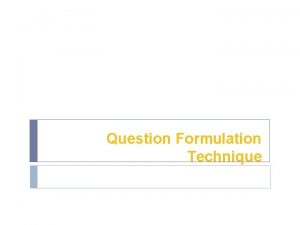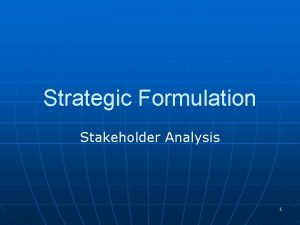Advances in LAM 3 DVAR formulation Vincent GUIDARD






















- Slides: 22

Advances in LAM 3 D-VAR formulation Vincent GUIDARD Claude FISCHER Météo-France, CNRM/GMAP

Introduction • Through various experiments, a drawback of biperiodic increments has arisen : « wrapping around » analysis increments

Introduction

Introduction • Through various experiments, a drawback of biperiodic increments has arisen: « wrapping around » analysis increments Controlling the lengthscale of the correlation functions is necessary: compact support • Introduction of a large-scale information in the LAM analysis to let the increments due to the observations be of mesoscale

1. 1 Compact support - definition • Aim : Reducing the lengthscale of structure functions • The COmpactly SUpported (COSU) correlation functions are obtained through a gridpoint multiplication by a cosine-shape mask function. The mask should be applied to the square root of the gridpoint correlations (Gaspari and Cohn, 1999)

1. 1 Compact support - definition Steps to modify the power spectrum: 1. Power spectrum modal variances 2. Fill a 2 D spectral array from the 1 D square root of the modal variances 3. Inverse bi-Fourier transform – mask the gridpoint structure – direct bi-Fourier transform 4. Collect isotropically and square to obtain modified modal variances 5. Modal variances power spectrum

1. 2 Compact support – 1 D model Gridpoint Auto. Correlations T 22

1. 2 Compact support – 1 D model Power Spectrum T 22

1. 2 Compact support – 1 D model Analysis

1. 3 Compact support – ALADIN Univariate approach: Original B Horizontal covariances COSU 100 km-300 km

1. 3 Compact support – ALADIN Multivariate approach: The multivariate formulation (Berre, 2000): *u is the umbalanced part of the * error H is the horizontal balance operator

1. 3 Compact support – ALADIN • COSU Horizontal autocorrelations; Vertical cross-correlations and horizontal balance operator not modified Whatever the distance of zeroing, results are « worse » than with the original B. Explanation : the main part of the (temperature) increment is balanced, while only the horizontal correlations for z are COSU, but not for Hz.

1. 3 Compact support – ALADIN – Cure 1: a modification of the z power spectrum in order to have COSU correlations for Hz same results as the original B. – Cure 2: another solution is to compactly support the horizontal balance operator

1. 3 Compact support – ALADIN Original B All COSU 300 km-500 km

1. 3 Compact support – conclusion • Single observation: – Very efficient technique in univariate case – Needs drastic measures (COSU horizontal balance) to be efficient in multivariate case • Full observation set: – No impact, even with drastic measures – Further research is necessary – Problems possibly due to a large scale error which this mesoscale analysis tries to reduce use of another source of information for large scales

2. 1 « Large scale » cost-function • Aim : input a large scale information in the LAM 3 D-VAR. • The large scale information is the analysis of the global model (ARPEGE) put to a LAM low resolution geometry • Thanks to classical hypotheses, plus assuming that the global analysis error and the LAM background error are NOT correlated, we simply add a new term to the cost function

2. 1 « Large scale » cost-function • J(x) = Jb(x) + Jo(x) + Jk(x), where H 1 : H 2 : V: x. AA : global LAM low resolution LAM high resolution LAM low res. « large scale » error covariances global analysis

2. 2 Large scale update - evaluation • 1 D Shallow Water « global » model (I. Gospodinov) LAM version with Davies coupling (P. Termonia) Both spectral models • 1 D gridpoint analyses implemented: – Using LAM background and observation (Jb+Jo) BO – Using LAM background and global analysis (Jb+Jk) BK – Using all information (Jb +Jo+Jk) BOK Plus dynamical adaptation DA • Aim: comparing DA and BK comparing BO and BOK

2. 2 Large scale update - evaluation • Dynamical Adaptation versus BK LAM BK background analysis DA global analysis truth Statistically (Fisher and Student tests on bias and RMS): No difference between DA and BK

2. 2 Large scale update - evaluation • BO versus BOK: observation over all the domain LAM background BOK analysis BO analysis global analysis + truth observation Statistically: No difference between BO and BOK

2. 2 Large scale update - evaluation • BO versus BOK: obs. over a part of the domain Statistically: BOK better than BO LAM background BOK analysis BO analysis global analysis + truth observation

2. 3 Large scale update - conclusion • The large scale information seems useful only in border-line cases, in the Shallow Water model • Next steps : – Evaluation in a Burger model – Ensemble evaluation of the statistics in ARPEGEALADIN (based on the work of Loïk Berre, Margarida Belo-Pereira and Simona Stefanescu) – Implementation in ALADIN
 Why problem formulation follow goal formulation
Why problem formulation follow goal formulation Pengertian alif lam syamsiyah
Pengertian alif lam syamsiyah Parshat vayishlach summary
Parshat vayishlach summary Amsc dvar
Amsc dvar Dvar torah meaning
Dvar torah meaning Irac norms
Irac norms Advances in technology during wwii
Advances in technology during wwii Short term loans and advances
Short term loans and advances Advances in memory technology
Advances in memory technology Chapter 9 intellectual development in the first year
Chapter 9 intellectual development in the first year Opto-electronic advances
Opto-electronic advances Axis powers
Axis powers Advances in real-time rendering in games
Advances in real-time rendering in games Recent advances in ceramics
Recent advances in ceramics Payroll in tally
Payroll in tally Advances in mri
Advances in mri Global oncology trends 2017 advances complexity and cost
Global oncology trends 2017 advances complexity and cost Question formulation technique examples
Question formulation technique examples Question formulation technique worksheet
Question formulation technique worksheet Herbicide formulation
Herbicide formulation Non researchable problem
Non researchable problem Pediatric formulation development
Pediatric formulation development Jk flip flop
Jk flip flop
